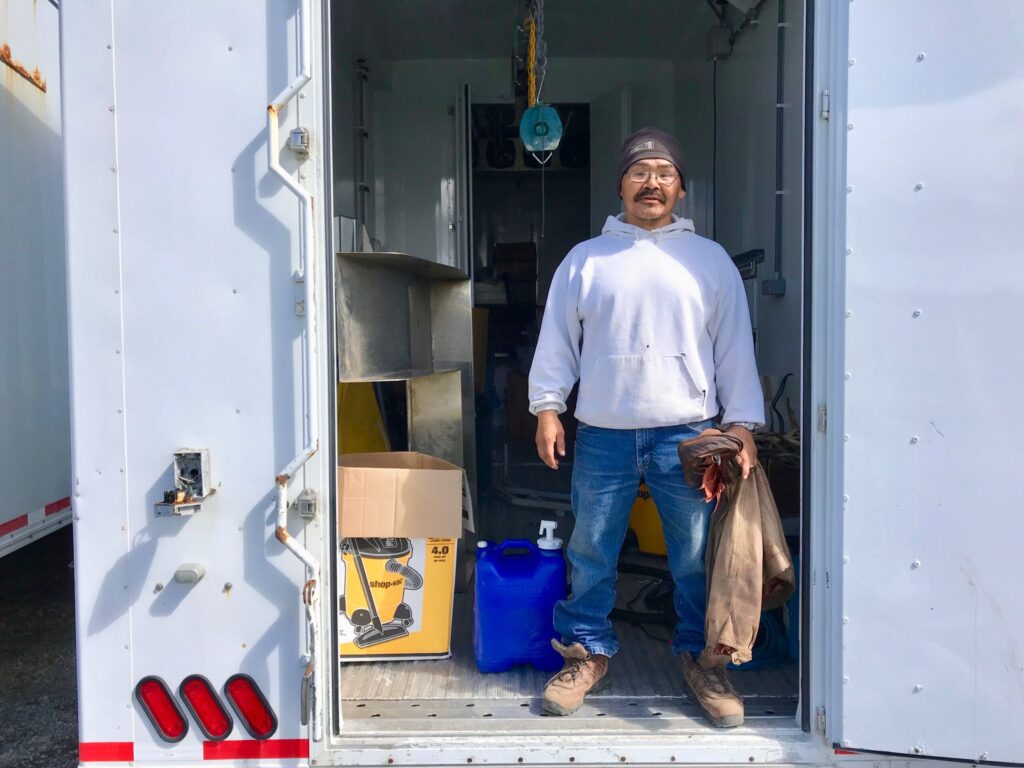A new king crab species sits in the live tank at Norton Sound Seafood Center. It is thorny and boxy, and it is the first one being sold from the region this season.
The crab is a Hanasaki king crab, otherwise known as a “spiny” king crab, and fishermen in the Bering Strait Region are harvesting it as a commercial product for the first time this year.
Justin Noffsker is the Assistant Plant Manager for the Norton Sound Seafood Center, a retailer for the Norton Sound Economic Development Corporation. When asked about the new crab, he said, “That’s our first one this year. I think a lot of people just don’t know what to think about it. I think they think it’s kind of a novelty. They taste like king crab. They’re a little harder to get into.”
This spring NSEDC proposed a reclassification of Hanasaki crab to the Alaska Board of Fish. The Board accepted the proposal and relisted Hanasaki crab from “miscellaneous shellfish” to king crab.
Wes Jones is the NSEDC Norton Sound Research Fisheries Director and described the shift: “Having it classified as a king crab species under state regulations, the management of Hanasaki crab automatically gets put into the king crab regulations.”
Biologically, Hanasaki is a king crab species, and the reclassification does three main things. It opens a regulated, commercial market for Hanasaki king crab. It restricts harvests of the crab in the Bering Strait Region to regional fishermen. And it allows for more accurate documentation of the species.
Scott Kent is a fisheries biologist with the Alaska Department of Fish and Game and explained why more accurate data is important: “If we get better reporting on harvest location and numbers and stock compositions, as a Department, we can start collecting better biological data, which in turn could be used to develop a management plan specific for this species.”
Little is known about Hanasaki crab in the region. The crabs are historically found near Japan and eastern Russia. The first recorded Hanasaki crab in the Norton Sound Section appeared in 2003 off Little Diomede. Then in 2010, the crabs started popping up in subsistence and commercial pots with the majority appearing around St. Lawrence Island.
Kent estimates less than 100 Hanasaki crab have been harvested in the region over the years, meaning the population is small. But Kent said where the crabs are being harvested is spreading and the ones being captured include adult males, egg-carrying females, and juveniles, meaning the crabs might be establishing a growing population in the region.
If that is the case, NSEDC wants to benefit commercially and ADF&G wants to be able to sustainably manage the market while monitoring Hanasaki’s effect on the state’s lucrative red and blue king crab populations.
Kent said that process is a years-long road. “It’s going to take time,” Kent said. “We’re in the infancy right now, but that’s better than, you know, all of a sudden we have thousands of them and then we don’t have anything in place on the front end. So it’s actually good that we’re out in front of this.”
Hanasaki crab are being caught incidentally with red and blue king crab and fall under the same legal size as red king crab.







